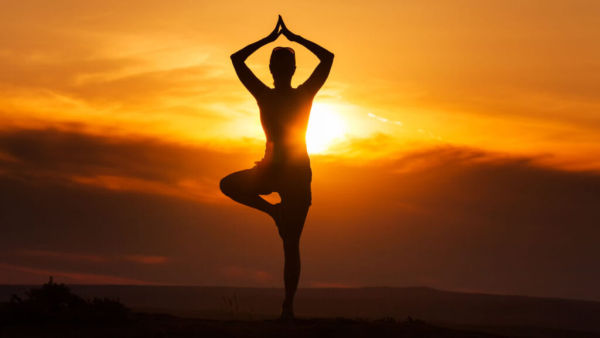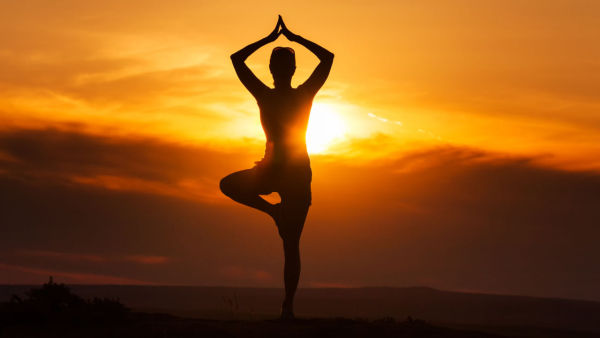

New Delhi: When viewed from a spiritual lens, yoga transcends physical exercise and leads to a path of self-discovery. And is a union with higher consciousness. Yoga is a holistic practice that integrates body, mind, and spirit, fostering inner peace, a deeper connection to oneself, and self-awareness.
Spiritually, yoga encompasses diverse paths which lead to self-realisation and union with the divine. There are primarily four types of yoga that lead to spiritual enlightenment: Karma Yoga (action), Bhakti Yoga (devotion), Jnana Yoga (knowledge), and Raja Yoga (meditation). In this article, let us explore these four types of yoga, which lead to different approaches to achieving spiritual liberation and utilisation of several aspects of human experience.
The four paths of yoga—Karma, Bhakti, Jnana, and Raja—offer unique spiritual approaches that lead to self-awareness, discipline and a deeper connection with the divine (Photo credit: Jub Rubjob/Moment/Getty Images)
Karma Yoga, the path of selfless action, emphasises dedicating duties to the Divine without attachment to outcomes. It fosters a disciplined and charitable spirit, encouraging altruistic behaviours as a form of spiritual practice. The Bhagavad Gita teaches that selfless deeds lead to oneness. By renouncing the fruits of our actions and focusing on our life purpose (Dharma), we serve humanity and the Divine, helping us overcome selfish tendencies and achieve a balanced mind.
Karma Yoga suits those who find fulfilment in action and service, particularly individuals with active lifestyles or careers focused on helping others. It also benefits those looking to cultivate humility and patience by diminishing the ego’s influence.
To practice Karma Yoga, engage in daily tasks as offerings to the Divine, with no expectation of reward. This may include volunteer work or performing your job with integrity. Central to this practice is Nishkam Karma, which means acting out of pure joy without desire for personal gain.
Bhakti Yoga is the path of loving devotion, worship, and surrender to the Divine within and around us. A Bhakti Yogi sees everything as a gift from God, nurturing selfless devotion and transcending egoistic self-love.
This form of yoga is suitable for everyone, especially those who are heart-centered and emotionally driven. It appeals to individuals seeking spirituality through love and devotion rather than through strict discipline.
Key practices include chanting mantras, engaging in worship (puja), and participating in religious ceremonies. Music and dance often express devotion, enhancing the immersive experience. Additionally, serving and seeing the divine in all beings fosters compassionate relationships.
Jnana Yoga is the path of knowledge and wisdom, emphasising intellectual growth and understanding one’s true nature through self-reflection and philosophical inquiry. This path highlights that ego-based ignorance prevents the realisation of our true Self.
It is particularly suited for introspective individuals with a strong desire to understand life’s truths, typically appealing to those who prefer logic and reason, as noted in the Bhagavad Gita.
Practising Jnana Yoga involves rigorous self-inquiry, meditation, and studying philosophical texts. Key practices include:
Raja Yoga, known as the “royal path”, emphasises mind control through meditation and disciplined living. It teaches that our disconnection from our true Self stems from a restless mind. The Bhagavad Gita highlights meditation as a means to focus solely on the Ultimate Self, fostering self-realisation.
This yogic path is elaborated in Patanjali’s Yoga Sutras as Ashtanga Yoga, or the Eight Limbs of Yoga, which guide individuals toward self-realisation. Raja Yoga is ideal for those seeking a structured approach to spiritual growth, particularly individuals who are disciplined and drawn to meditation.
The practice incorporates the eight limbs:
To enhance your yogic practice, identify which of the four types of yoga — Karma, Bhakti, Jnana or Raja — resonates with you.
These paths are interconnected and can be blended in practice, all ultimately leading to spiritual liberation and unity with the divine.